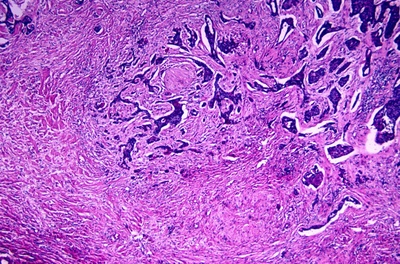Mohs surgery is a highly specialized technique that removes tumors like basal cell carcinoma and squamous cell carcinoma layer by layer from the skin. During this process, the tumors are mapped out so only cancerous tissue is removed while healthy skin is spared.
 “These tumors can project downwards and outwards, in some cases with tiny finger-like extensions into the surrounding tissue,” says Dr. Adam Mamelak, board-certified dermatologist and fellowship-trained Mohs micrographic surgeon in Austin, Texas. Dr. Mamelak notes that different skin cancers have different growth patterns, some resembling bunches of grapes while others the roots of a tree. “It is critical to remove all cancer cells from the skin to ensure a patient is cured and to prevent recurrence of their skin cancer.”
“These tumors can project downwards and outwards, in some cases with tiny finger-like extensions into the surrounding tissue,” says Dr. Adam Mamelak, board-certified dermatologist and fellowship-trained Mohs micrographic surgeon in Austin, Texas. Dr. Mamelak notes that different skin cancers have different growth patterns, some resembling bunches of grapes while others the roots of a tree. “It is critical to remove all cancer cells from the skin to ensure a patient is cured and to prevent recurrence of their skin cancer.”
But how can a Mohs surgeon see the roots of the skin cancer?
“It’s actually one of the most common questions my patients ask me,” says Dr. Mamelak.
The truth is, these cancerous roots are not visible with the naked eye. A microscope in the lab is used to guide the surgery.
After the cancerous tissue is removed from the patient’s skin, microscope slides are prepared in the Mohs lab. Special dyes like hematoxylin and eosin or toluidine blue are used to stain in the tissue and highlight its different cellular components. Additional stains like MART-1 can be used to identify melanoma cancer. Cancer cells or their surroundings will often stain different colors compared to healthy tissue. The stains can also make the cells and their contents more visible allowing the doctor to see if the cells have atypical features. “Without the stains it would be very difficult to identify any of the cells in the tissue,” explains Dr. Mamelak. The stained slides are examined under the microscope and the cancer roots are delineated and pinpointed.
Combining microscopic analysis with the detailed color-coded maps is the way the surgeon can identify and localize the cancerous tissue in the skin. It is also the way we ensure all cancer cells are removed and nothing is left behind.
Dr. Mamelak treats skin cancer patients at Sanova Dermatology and the Austin Mohs Surgery Center.
Contact Us
If you are seeking treatment for a skin cancer or have questions about Mohs surgery, please contact us today.
Join Us

